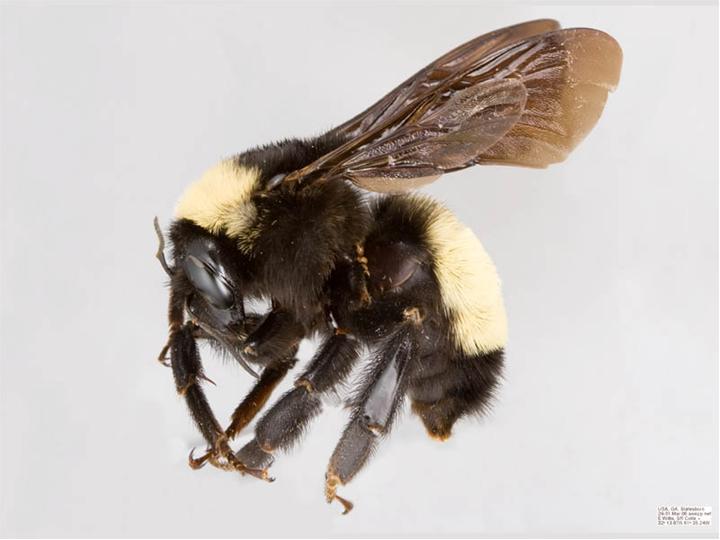Reproduction
The reproductive cycle of Bombus
pensylvanicus is the same as other species of bumblebee.
Bumblebees produce my means of haplodiploidy, which means the
female bees can produce eggs without mating.
Fertilized eggs can become either queen bees or female workers, and
unfertilized eggs become males (Discover Life 2013).

The cycle begins at the end of summer when a
newly hatched queen bee mates with a male. The
fertilized queen bee then enters
hibernation until spring
of the following year. Once conditions are right
the queen arises and begins a search for a nest, usually in March (Tranji
1996). The Queen bee begins her colony after the
nest is found and she has gathered nectar and pollen, which is used
to build the wax pot and a source of nutrition; the pollen
stimulates the ovaries to produce eggs; these eggs are fertilized
from the previous year and will develop into female workers. The
Queen keeps the eggs warm
through the beginning stages of development
with the use of her pubescence. The eggs
then begin their life cycle beginning with the larval stage, pupae,
and finally adult female workers, who tend to the nest,
as well as the eggs the Queen continues to lay. It is approximately four to five weeks
from egg to adult bee (Bumblebee 2013). The first
workers to emerge are small in comparison to those that will hatch
and begin their life cycle towards the middle of summer.
These workers forage and contribute to the increase in size
of the colony by providing resources for growth (Tranji 1996).
By late summer there can be over 200 worker bees.
By this time the queen bee has stopped producing a chemical,
that has been produced throughout the life of the colony, which inhibits the ovarian production of the female
workers and causes the Queen to lay worker females instead of
queens. When this chemical ceases, the Queen bee
lays a batch of eggs that will themselves become queen bees;
she also begins to produce male eggs.
This stage marks a change in the dynamic of the nest.
Some female workers are now able to lay their own eggs and do
so despite the Queen’s attempts to destroy them.
The animosity and tension continue through late summer until
finally the workers revolt and sting the queen bee to death.
The
workers will not survive winter,
but the batch of
queen bee eggs the Queen herself laid have hatched, pupated, and left
the nest to mate, hibernate through the winter, and begin the cycle
again (BBC 2013).